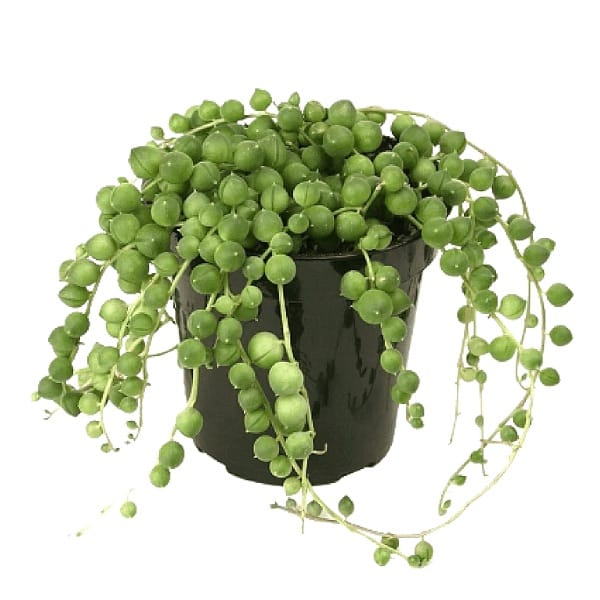Plant Care
- Light: String of Pearls prefers bright, indirect light. Place it near a sunny window where it can receive several hours of indirect sunlight each day. Avoid exposing it to intense, direct sunlight, which can scorch its delicate leaves.
- Watering: Water String of Pearls thoroughly when the top inch of soil feels dry to the touch. Allow excess water to drain away, as it is susceptible to root rot if left sitting in soggy soil. Reduce watering during the winter months when growth slows.
- Soil: Plant String of Pearls in a well-draining succulent or cactus mix. A mix that includes perlite or coarse sand can help improve drainage and prevent waterlogging.
- Temperature: String of Pearls prefers temperatures between 59-86°F (15-30°C) during the day and slightly cooler temperatures at night. Protect it from drafts and extreme temperature fluctuations.
- Humidity: String of Pearls can tolerate average indoor humidity levels, but it appreciates slightly higher humidity. Mist the plant occasionally, especially during dry periods, to increase humidity around the leaves.
- Fertilization: Feed String of Pearls with a balanced liquid fertilizer diluted to half strength during the growing season (spring and summer). Fertilize sparingly, as too much fertilizer can lead to leggy growth.
- Container: Plant String of Pearls in a hanging basket or a container with drainage holes to allow excess water to escape. Ensure the container has adequate drainage to prevent waterlogging.
- Pruning: Trim back any leggy or overgrown stems to encourage bushier growth and maintain the plant’s shape. You can also prune to remove any dead or damaged stems.
- Propagation: String of Pearls can be propagated easily from stem cuttings. Simply snip a healthy stem, allow it to callus for a day or two, then plant it in a well-draining potting mix.
- Pests: Keep an eye out for common succulent pests such as mealybugs and spider mites. Treat any infestations promptly with insecticidal soap or neem oil.
- Support: String of Pearls may benefit from support as it grows and becomes heavier. Consider providing a trellis or stakes to help support the trailing stems.




